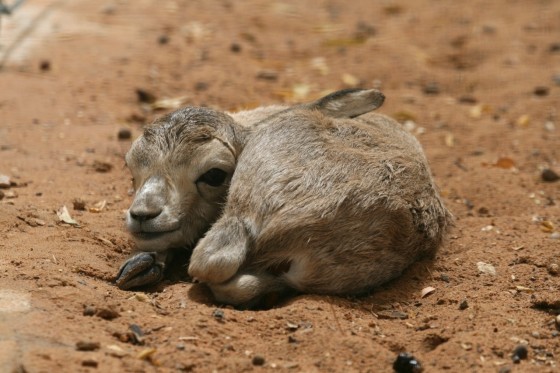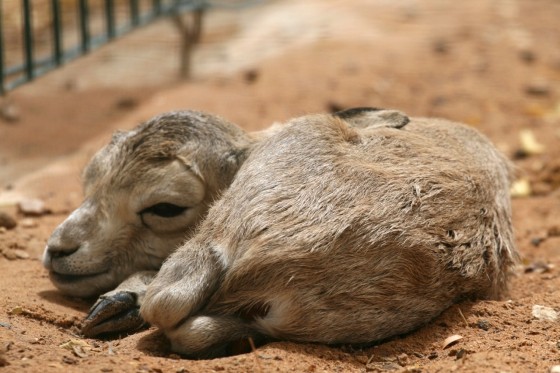 This Arabian sand gazelle in the United Arab Emirates is now six days old!
This Arabian sand gazelle in the United Arab Emirates is now six days old!
While some zoos in the Middle East and North Africa have a terrible track record when it comes to their treatment of animals, Al Ain Zoo in the United Arab Emirates functions as a leading wildlife conservation center that specializes in threatened species from the world’s arid regions. It was at their veterinary center that these adorable Arabian sand gazelles were born on 18 March, 2012.
Also known as Rhim or slender horned gazelles, Arabian sand gazelles are listed as vulnerable on the International Union for the Conservation of Nature’s (IUCN) list of threatened species because of illegal hunting, habitat disruption, and agricultural development. The Al Ain newborns, three males and two females, were bred in captivity and these pictures of them certainly made our day!
Stories about Kuwaitis who shoot flamingos and wolves for sport or the Lebanese who massacred a cave full of bats leave a nasty taste in the blogosphere, so it’s an enormous relief to bring happy wildlife news from the Middle East.
Originally established in 1968 by the late Sheikh Zayed, a revered environmentalist and leader, the Al Ain Zoo has recently expanded to become a wildlife park and resort. Included in the UAE World Desert facility is the Sheikh Zayed Desert Learning Center, where visitors can learn more about desert fauna and flora.
To date Al Ain researches and protects 4,300 animals, and is particularly well-known for its work with gazelles.
Arabian Sand Gazelles are extinct in several countries in which they used to occur, but populations still exist throughout the Arabian peninsula and in Central Asia. However, their numbers have declined by at least 30% in the last few decades as a result of poaching and competition with farmers for land.
Fortunately they are a fairly hardy species that can survive in a wide range of arid and semi-arid conditions. They thrive in dunes and desert environments, but also travel through the foothills and valleys of Central Asia to altitudes of as high as 2,700 m. They migrate in search of food and water.
These pictures are bound to put a smile on your face, but even more importantly, they are a symbol of hope. As custodians of the Gulf’s incredible biodiversity, we are grateful to Al Ain for their dedication to its preservation.
More on Wildlife in the Middle East and North Africa:
Kuwaiti Kills Wolf Then Shows Off
Thousands of Endangered Fruit Bats Were Gunned Down in Lebanon
The Cheetah: Nature’s 21st Century Feminist




